Sandwich Tern
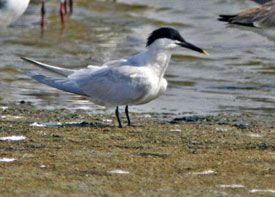
© Dr. David McDonald
Thalasseus sandvicensis
Family: (Laridae) Gulls and Terns
Preferred Habitat: Beaches and coastal marshes.
Seasonal Occurrence: Common throughout the year. Nests in our area.
Notes by Jess McClean: The Sandwich Tern is a medium-sized tern, larger than a Common or Forster's Tern but noticeably smaller than a Royal or Caspian tern. It has a white body with a pale gray back, black legs and elongated feathers on its head giving it a shaggy crest. In breeding plumage, it has a black cap, while in non-breeding plumage this cap is replaced by a pale white forehead. Sandwich Terns are best identified by their long, thin, black bill with a yellow tip, which many birders say looks as if it has been dipped in mustard.
There are 3 subspecies of Sandwich Tern: one in North America, one in Eurasia, and one found in the Caribbean and on the Atlantic Coast of South America. While the North American and Eurasian subspecies have the same appearance, the third subspecies, often referred to as the Cayenne Tern, has a completely yellow bill.
Sandwich Terns are resident all along the Gulf Coast, with their breeding range extending along the Atlantic Coast up to New Jersey. In Texas, Sandwich Terns nest colonially with Royal Terns, Laughing Gulls and Forster's Terns on both natural barrier islands and artificial dredge spoil islands. Bolivar Flats is a great place to look for these birds loafing in large groups with Royal Terns, but also keep your eyes peeled for them feeding, over the water, within 2 miles of the shore all along our coastline.
Profile by Grace Yaros: Sandwich Terns are slender, medium-sized terns with shaggy crests. Adults have pale gray backs and wings, and clean white underparts. During the breeding season, adults often develop a slight pinkish wash on their chest and belly. Breeding adults have solid black caps that become mostly white during the non-breeding season. To distinguish them from other terns, note their size – smaller than Royal Terns but larger than Common and Forster’s Terns – and the coloration of their bill: their long, rather thin bills are black with a yellow tip. Their bills are unique among North American terns. Gull-billed Terns, which are also common on the Upper Texas Coast, also have black bills, but their bills are shorter and thicker and lack the yellow tip.
They have a wide distribution and are found in both the Western and Eastern Hemispheres. In the Western Hemisphere, Sandwich Terns breed along the southern Atlantic Coast and Gulf Coast of the U.S., the West Indies, and along the Atlantic coast of South America. They breed on flat, low-lying islands with little or no vegetation that are close to shore (typically sandy barrier islands and barrier beaches on the Atlantic and Gulf Coasts and cays in the Caribbean). Throughout their range, they nest in mixed-species colonies with gulls and other terns. Sandwich Terns perform courtship displays both in the air on the ground, usually involving the male presenting a fish to the female. Their nests are shallow scrapes or depressions in the ground, made by both adults. Once chicks are old enough to fly, they follow their parents to nearby beaches where the adults continue to bring fish to their young. Juvenile birds are very similar in appearance to adults but have dark brownish-black bills and some black spotting on their backs.
Sandwich Terns are year-round residents on the Upper Texas Coast, and nest on islands in Galveston Bay. These dashing terns can be seen at Bolivar Flats Shorebird Sanctuary.
-
Cornell Lab of Ornithology
-
Bird Guide
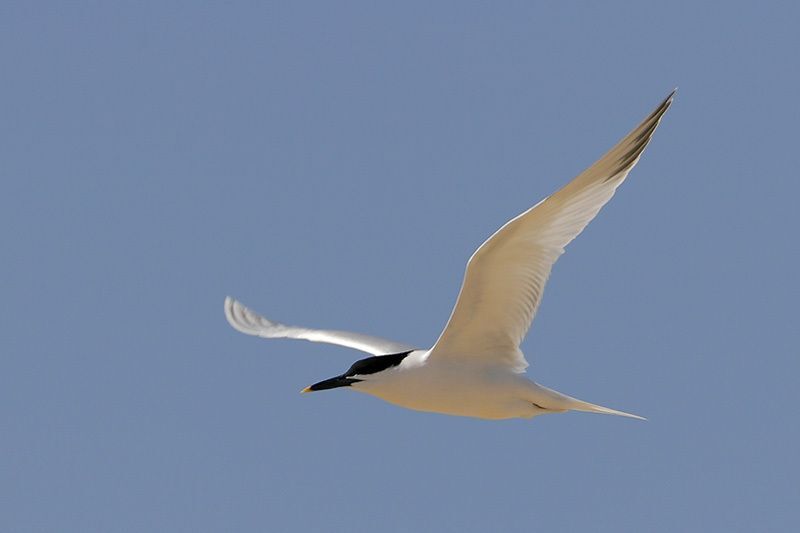
© Greg Lavaty, www.texastargetbirds.com
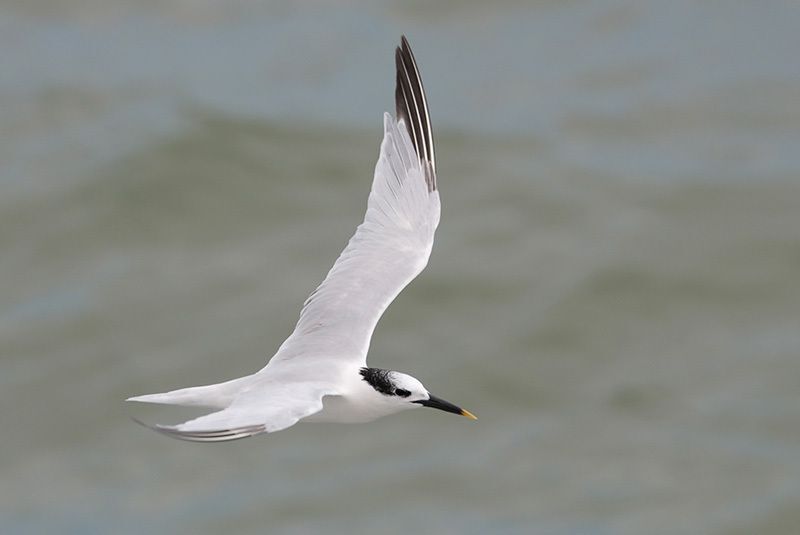
© Greg Lavaty, www.texastargetbirds.com
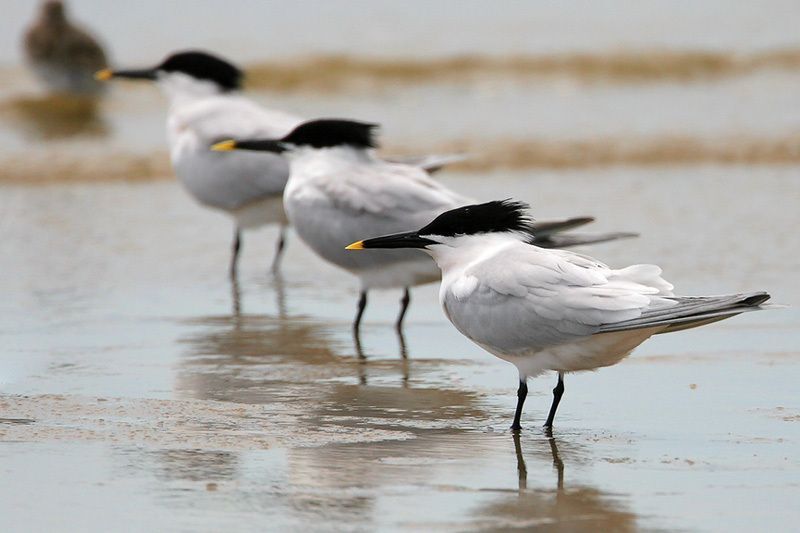
© Greg Lavaty, www.texastargetbirds.com
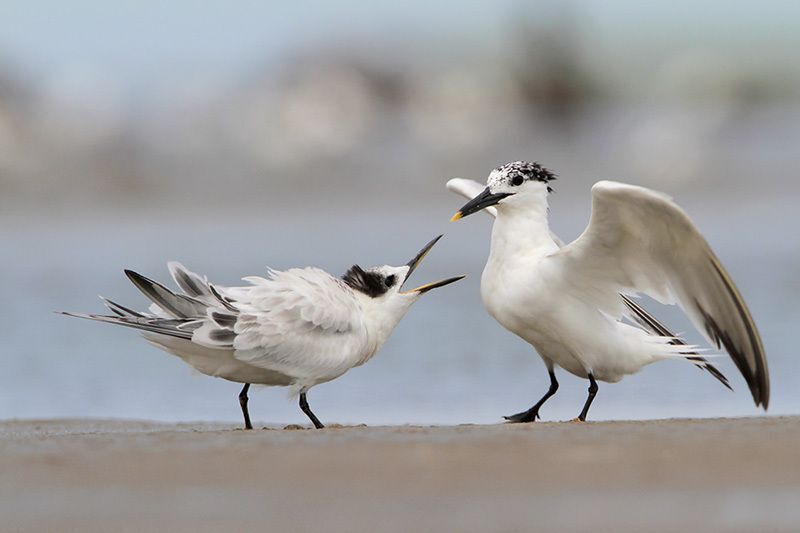
© Greg Lavaty, www.texastargetbirds.com




















